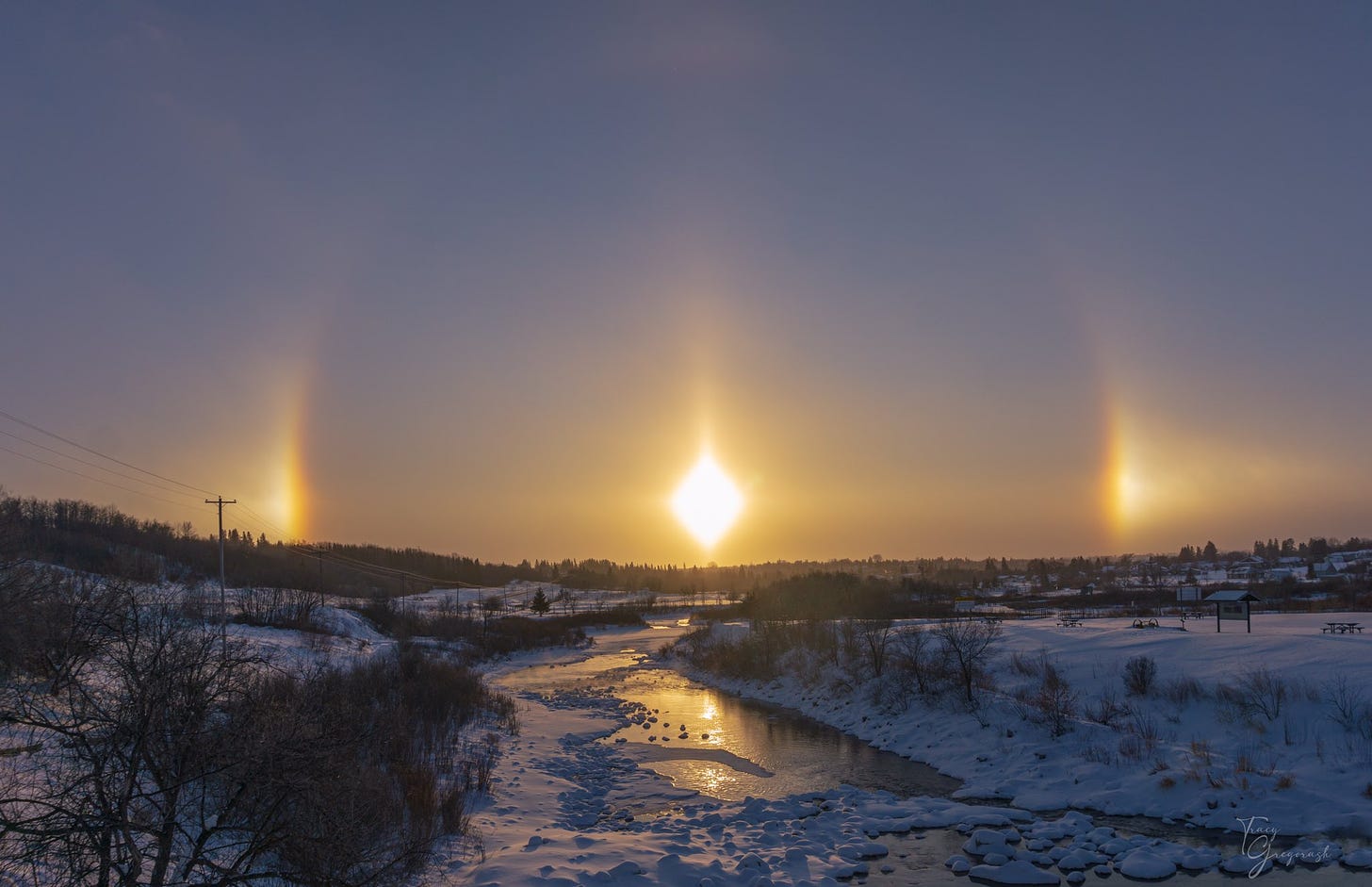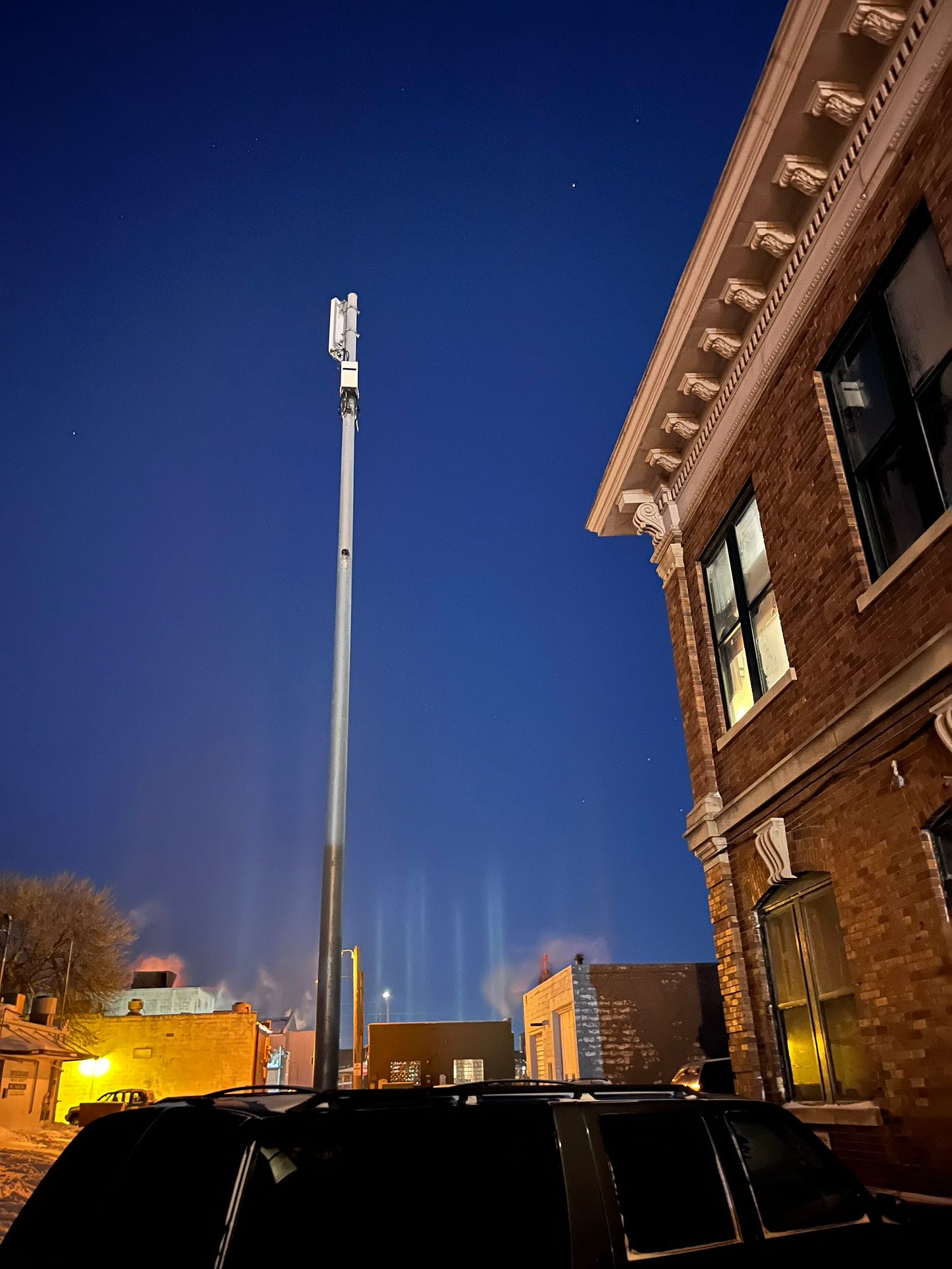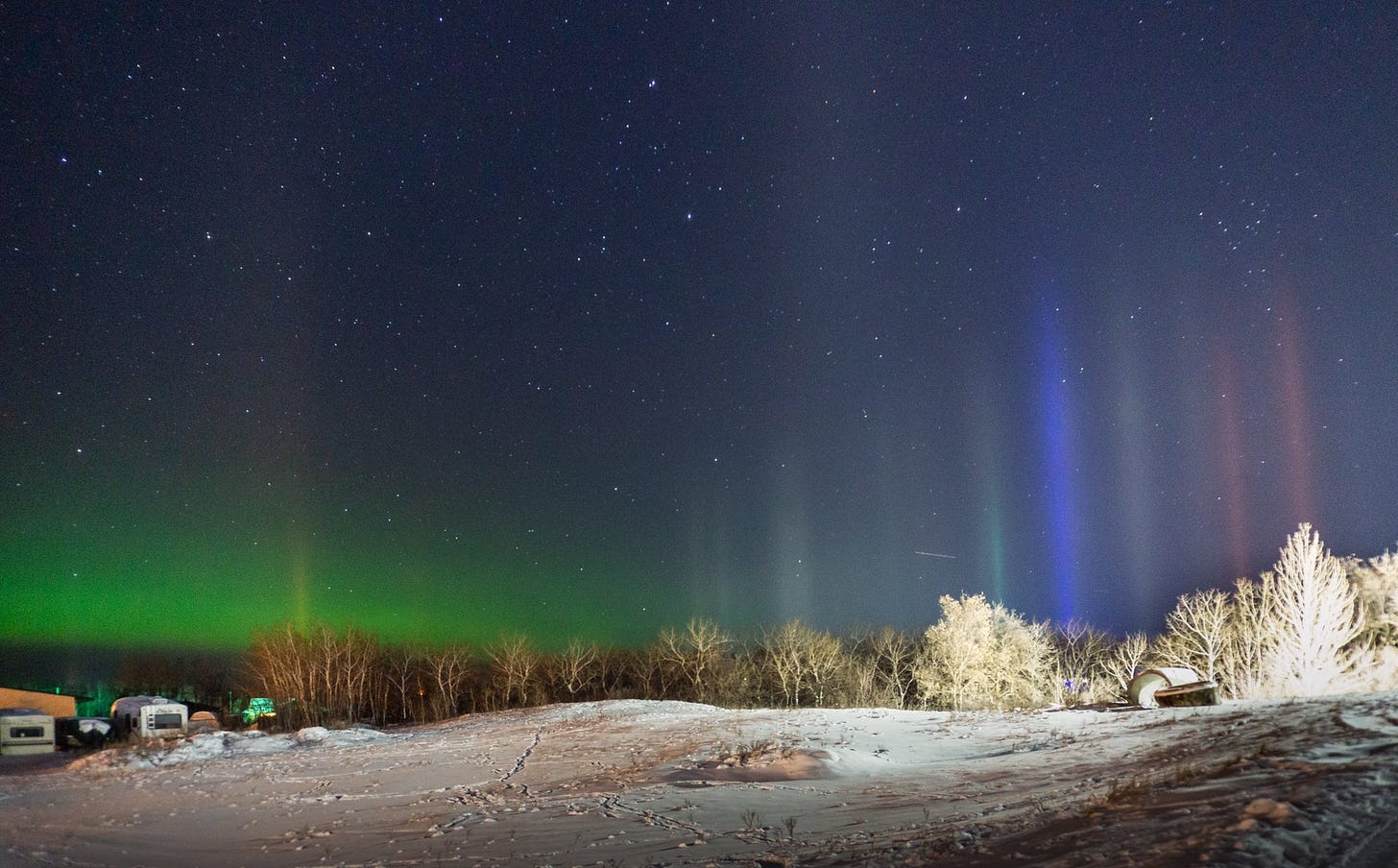Sundogs and other atmospheric phenomena, explained.
(Sundogs in Minnedosa, Manitoba. Photo by Tracy Gregorash)
BROOKINGS – Over the past few weeks, Brookings residents may have heard people talking about sundogs or they may have even seen one themselves.
But what’s a sundog? How do they happen? When do they happen?
Laura Edwards, state climatologist at South Dakota State University, explains that sundogs are colorful displays produced by the atmosphere when conditions are right.
“They are pretty common in the wintertime up here,” Edwards said. “To see sundogs, you have to have really cold air because (sundogs) are the light reflecting off of ice crystals in the atmosphere.”
Edwards explains that sundogs, which are also known as mock suns or parhelia (“with the sun”), are different than rainbows, which reflect off of liquid water.
“You see them in the wintertime because the air is cold and usually on the clear days when you don’t have cloud cover,” Edwards said. “We’ve had a number of those lately.”
While the clear skies help people see sundogs, high altitude cirrus clouds, which are thin, icy and associated with cold weather, contribute to the formation of sundogs.
Colder air at the ground level doesn’t necessarily translate to sundogs, Edwards explained, as the sun angle and prevalence of cirrus clouds are the main generators.
“The reason, I think, why we associate (sundogs) with cold temperatures is because they happen in the winter,” Edwards said. “That’s when the sun angle allows for the right reflection. You see them in the wintertime and those clear days are often those really cold days and then you kind of piece all that together and you think ‘Oh, they must be due to the cold.’ Well, not really. It’s more when you have clear skies or really thin clouds and cold temperatures up high to get the high crystals, and the right sun angle, which is during the winter.”
Sundogs can be viewed throughout the day, but Edwards sees them more in the morning and the evening, due to the angle of the sun.
Similar atmospheric conditions can cause other colorful displays, including halos and sun pillars. Sun pillars and halos, as Edwards explained, are less common than sundogs in South Dakota.
According to the National Weather Service, sun pillars appear as a shaft of light extending vertically above the sun, most often at sunrise or sundown. They develop as a result of ice crystals slowly falling through the air, reflecting the sun’s rays off them.
Edwards explained that sun pillars are seen at sunrise or sunset.
Light pillars, which are similar in look to sun pillars, form when city lights reflect off falling ice crystals.
(Light pillars near downtown Brookings. by Addison DeHaven)
“Those pillars we do see more at night,” Edwards explained.
In Brookings, light pillars can be seen on calm and clear winter nights throughout the city, but seeing the lights just outside of town allows for the best viewing.
(Light pillars with Aurora northern lights in the background. Photo by Tracy Gregorash.)
Halos, according to the National Weather Service, are a ring or light that forms around the sun or moon as the sun or moon light refracts off ice crystals present in a thin veil of cirrus clouds.
“The halos, those are not as common” Edwards explained. “Sundogs are more common, I’ll see sundogs every year, but the halos you’ll see like a complete circle, that’s not as common. It’s a similar phenomenon to sundogs, but to get the right atmospheric conditions is not as common.”
The halos are usually seen as a bright, white ring, although they can sometimes have color.
The current forecast for Brookings may give a chance for some sundog viewing on Wednesday or Thursday this week.






